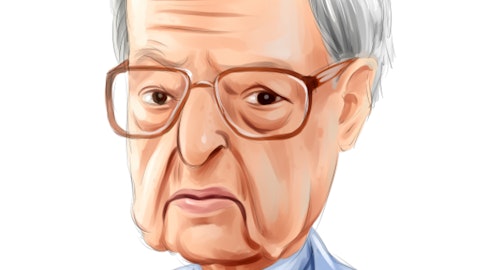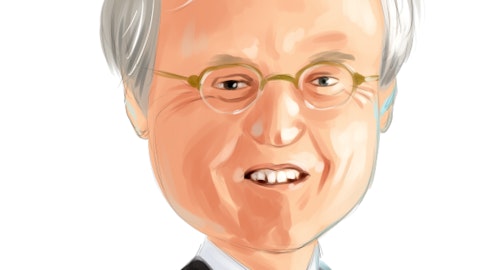Tom Lyons: Fed funds rate, probably with most everybody else, I guess it’s the 225 basis points in February and March and then stability thereafter. The margin for the month of December was about 3 60. So I think we’ll slow down a little bit over the course of the year but the first quarter should be pretty consistent with where we are for Q4.
Bill Young: Got it. Got it. And given the uptick in deposit betas this quarter, I think you had said it was 26% in 4Q. Are you still pretty confident in your through-the-cycle beta rate of 23%?
Tom Lyons: We are, yes, that uptick was right in line with our expectations. I think it will remain a bit elevated in terms of percentage on the next 2 hikes as well. But we’re pretty comfortable when we look at the trends in our deposits — core deposits, excluding municipal deposits and brokered very stable for the entire year really.
Bill Young: Got it. And just a separate topic. Any color you can add on some of the drivers of the uptick in charge-offs this quarter. I know it wasn’t a big number but are you seeing any trends in any particular asset classes or sectors there?
Tom Lyons: No, no deterring trends in asset quality at all. I would say very stable. In fact, if you look at the specific metrics, they’re like a point or 2 better across the board. Those charge-offs were really related to very specific credits that were previously reserved for the most part.
Tony Labozzetta: Price related.
Tom Lyons: Yes.
Bill Young: Okay, great. And just one final question. Just how are you thinking about the securities book going forward in terms of management this year? And can you just quantify how much that portfolio is cash flow in each quarter?
Tom Lyons: Sure. I don’t see us adding a lot of leverage unless we get a curve that makes sense. So I expect we’ll continue to see the securities book run down a little bit and be used to fund loan growth at improved spreads. I’m sorry, Bill, you asked us about funds flows. It’s come down some with the mortgage backed security portfolio rates rising. So it’s probably more in the $15 million, $16 million a month at this point. So call it $40 million to $45 million, $50 million a quarter.
Operator: The next question today comes from the line of Michael Perito from KBW.
Michael Perito: On the drill down on the margin, I think, Tom, you said that the kind of the exit margin in December was about 3 60. I wonder — I mean, what’s the kind of the spread you guys? Like if you look at the commercial lending pipeline and the yields you’re getting there versus incremental funding, where are spreads kind of today as you guys see it?
Tony Labozzetta: As I mentioned, our pipeline rate was, I believe, I said 6.76% was the number. I think a lot of our activity that’s coming in, we’re still growing — having some inflows on deposits, especially when it’s attached to our treasury function for our commercial lending group. So I would say the spreads are still in a place where we — that’s why we say the margin can stabilize. But we also declared that we think that it’s close to peak and that we may anticipate the funding costs rising a little bit faster as the year progresses, then the loan yields can keep up, particularly with two more Fed hikes.
Tom Lyons: When you think about incremental funding costs, as you said, the portfolio rates, what, 67 basis points for the quarter, that’s pretty reasonable in terms of a new deposit overnight funding on the wholesale market is considerably higher. Right overnight borrowings yesterday were 67 .



